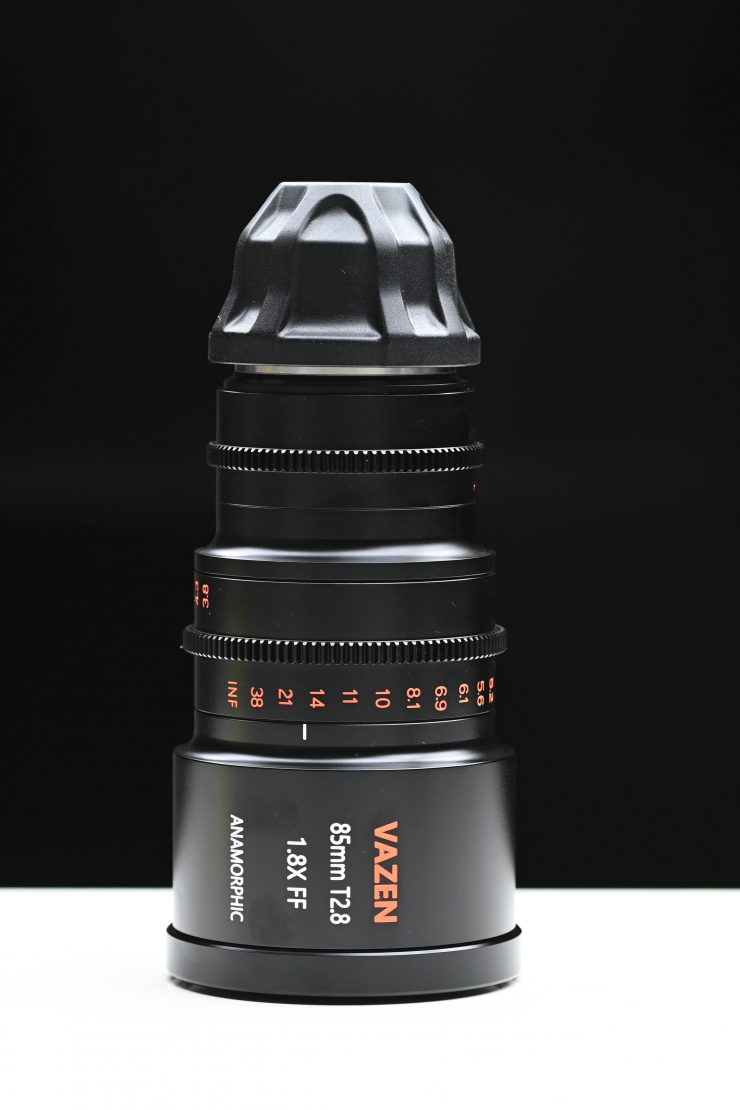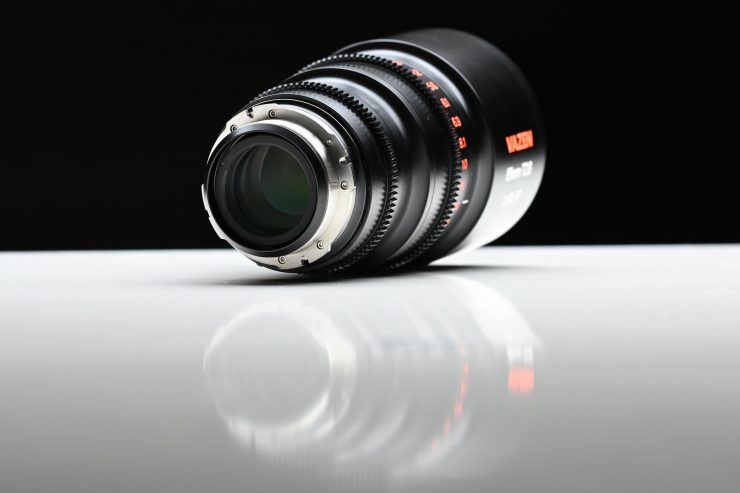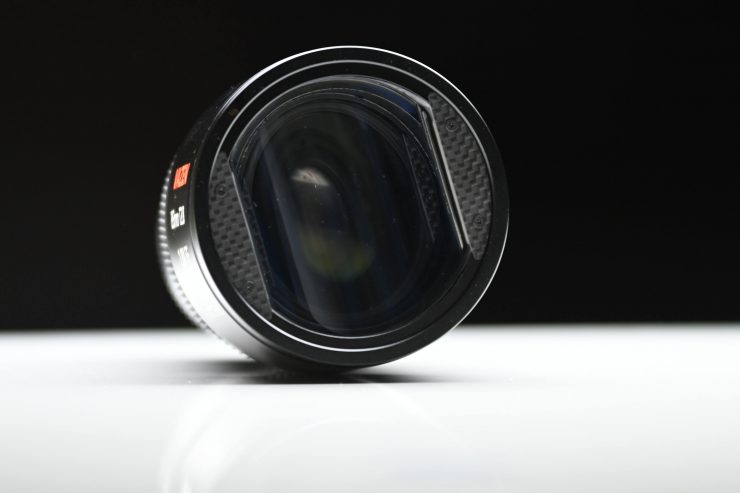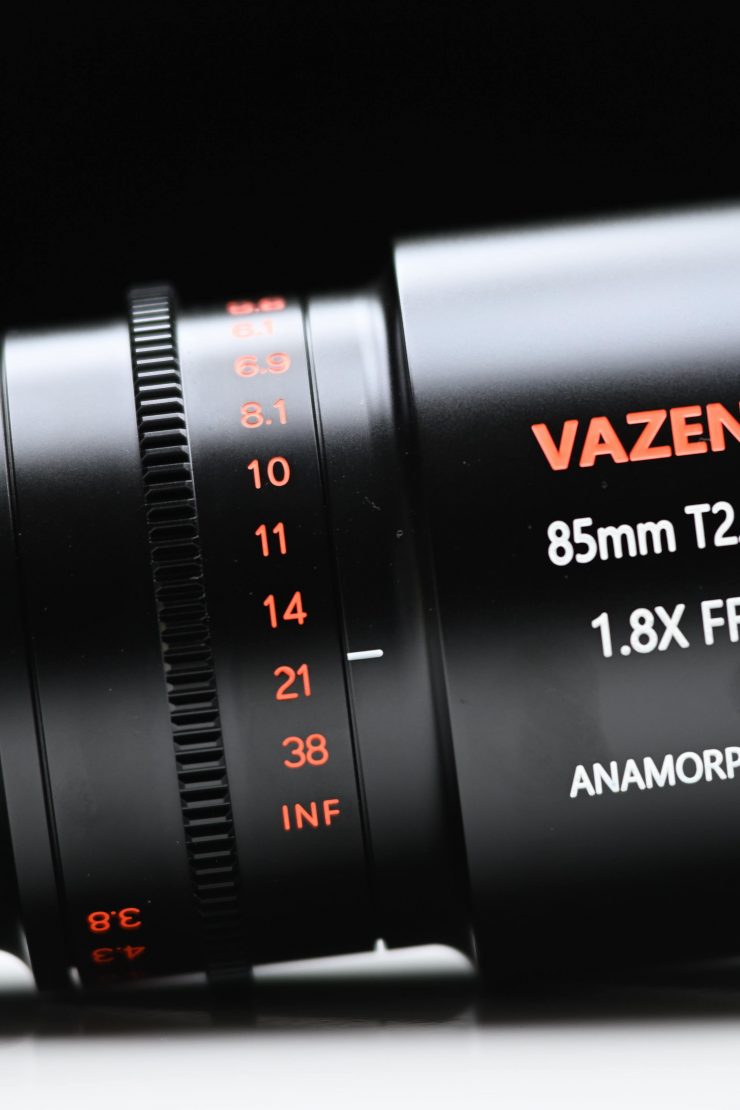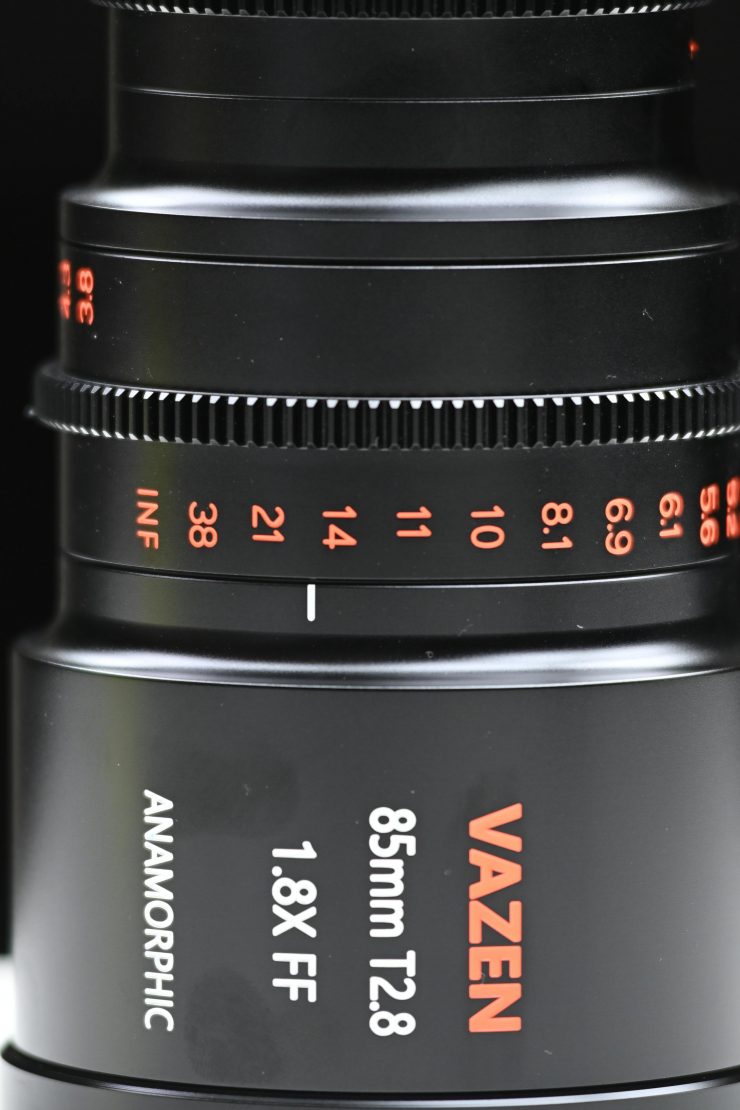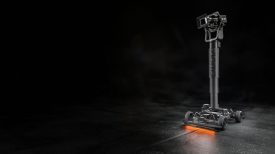
The Vazen 85mm T2.8 1.8x is a new full-frame anamorphic lens. It will cover RED Monstro and ARRI ALEXA LF open gate modes.
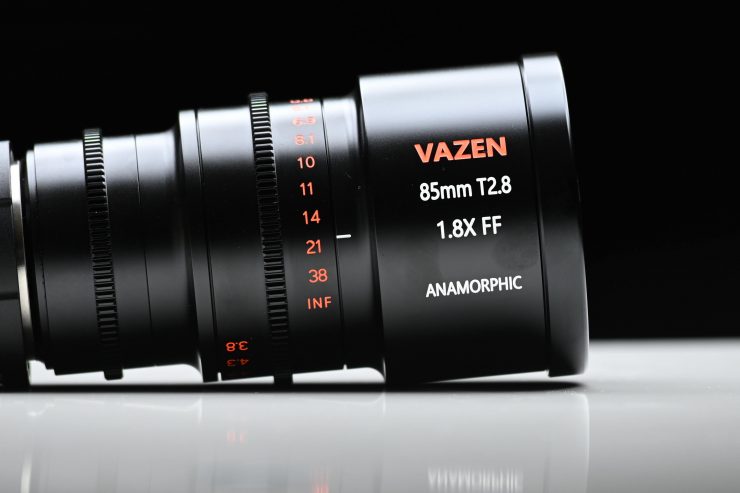
Who is Vazen?
Vazen is a Chinese lens manufacturer and a relative newcomer to the market. They have previously released two M4/3 anamorphic lenses.
Key features
- Covers RED Monstro & ARRI ALEXA LF open gate modes
- Min. Focus Distance: 3.8 Ft (1.15m)
- Weight: 3.28 lbs (1.49 kg)
- Length: 6.89″ (17.5 cm)
- Front Diameter: 95mm
- Filter Thread: 86mm
- Mount: PL / EF (User interchangeable)
Concept
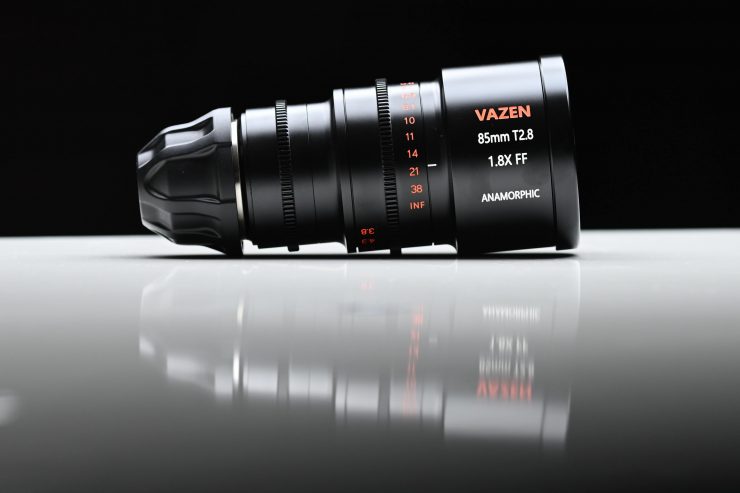
The 85mm T2.8 is part of a new LF line-up released by Vazen and it is designed to cover large format cinema cameras like the RED Monstro, ARRI ALEXA LF, Kinefinity Mavo LF, and Z-CAM E2-F8. A 55mm and 105mm lens is also in the works to complete a 3-lens set. These 2 focal lengths are due to ship in late 2020. There may well be other focal lengths available in the future to further expand the set.
I think it would be fair to say that Vazen is probably trying to attract owner/operators of mid-tier digital cinema cameras that are capable of shooting in open gate anamorphic modes. They could also very well find themselves in some rental houses where people are looking for a more affordable alternative to high-end and high-cost anamorphic primes.
At $8,000 USD it is hard to call it a budget lens, but in the anamorphic space, it could be viewed as such.
From M4/3 to Large Format
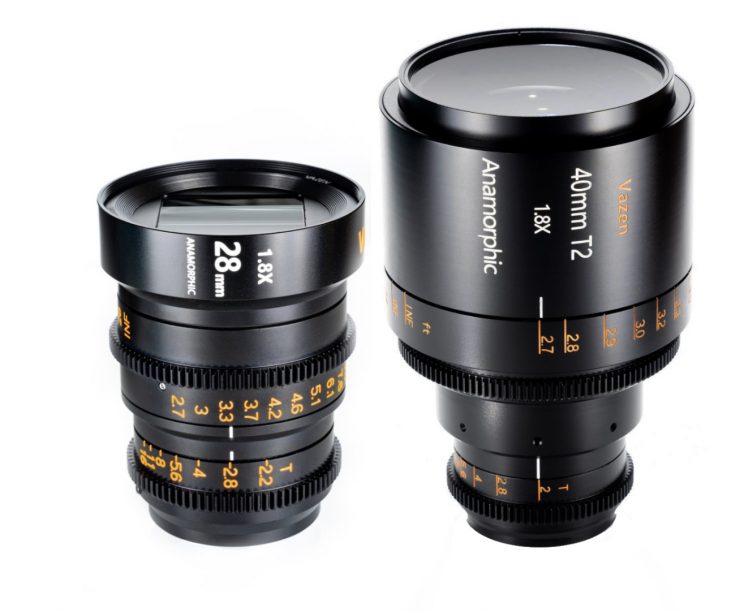
Vazen already makes 28mm T2.2 and a 40mm T2 1.8x anamorphic lenses, however, these only cover Micro Four Thirds sensors.
It is interesting to see a relatively young company such as Vazen now trying to compete in the full-frame and larger anamorphic space.
Technically the Vazen 85mm T2.8 1.8X FF Anamorphic Lens covers a 44mm image circle, but As I mentioned earlier it does still work with the RED MONSTRO.
Size & Weight
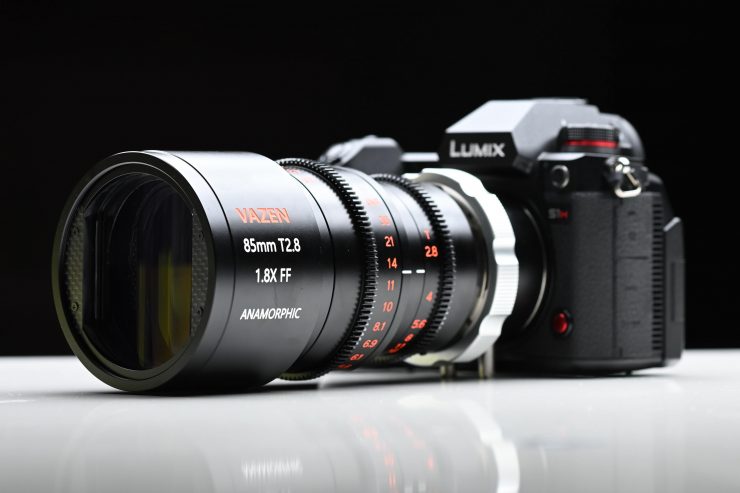
The 85mm 1.8X anamorphic lens features a reasonably compact and lightweight design. It tips the scales at 3.28 pounds (1.49kg) and it is 6.89” long (17.5cm). By keeping the size and weight to a minimum, this allows the lens to be balanced on gimbals and other stabilized platforms.
You may well find that the lens is a little large and heavy if you are putting it on a smaller sized camera.
Build Quality
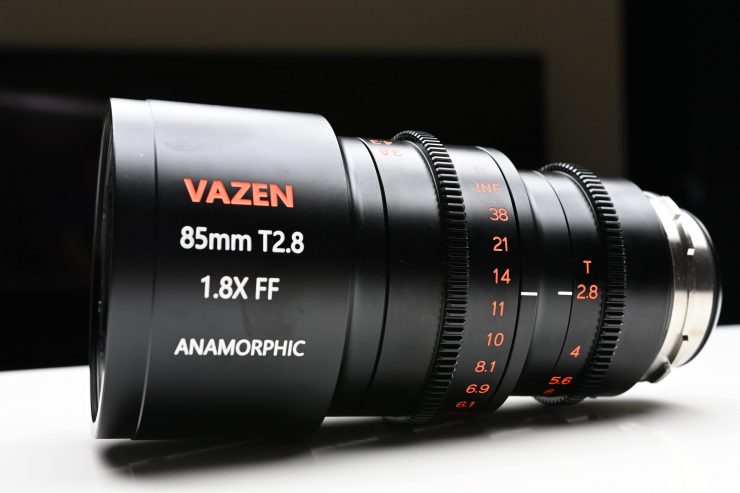
The lens is reasonably well made, but the build quality isn’t going to rival what is available from companies such as Cooke, Zeiss, or Angenieux. The focus and iris rings are nicely weighted, however, both of them are quite noisy when you move them. This may be a small thing, but it was enough for me to notice and take note of.
Attention to detail is very important, and if you want to sell a lens that costs $8,000 USD, customers shouldn’t come across issues, especially with the operation or build quality.
I may be sounding overly harsh here, but $8,000 USD is still a lot of money to spend on a lens, regardless of whether it is being touted as an ‘Affordable anamorphic lens.’
Esthetically, I don’t really like the physical look of the lens. The labeling and markings, and even the small bit of carbon fibre on the front of the lens, (I’m not sure if it is actually carbon fibre or not) to me give the wrong impression. First impressions matter, especially for a relatively unknown company, and regardless of how good a lens actually performs, appearance and attention to detail will matter to a lot of potential customers.
Again this is just my personal opinion, and others may well like the design of the lens.
Markings
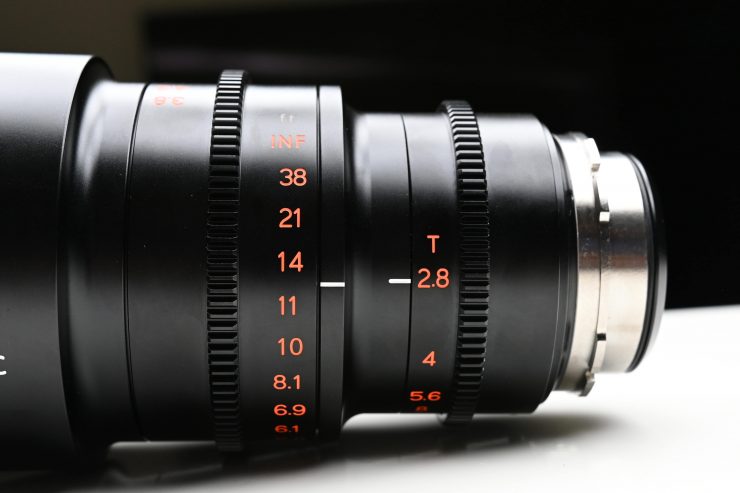
The markings on the lens, at least in my opinion, could be a lot better. There are no physical marks next to the distances placed on the lens.
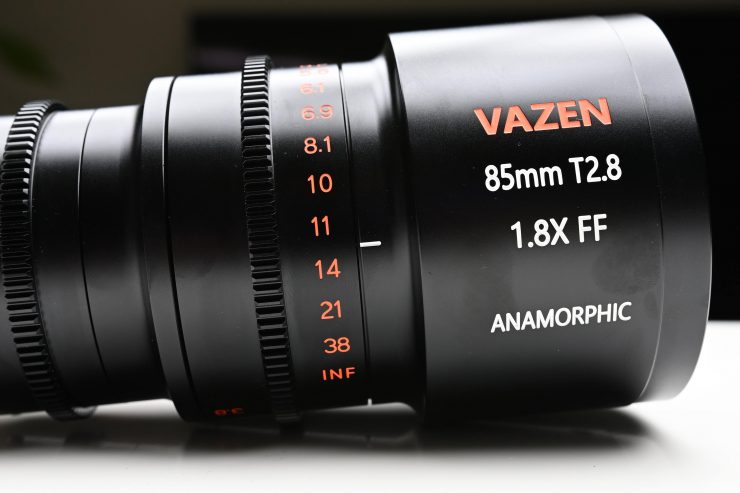
The other thing I did notice is that there are no aperture markings on the non-operators side of the lens.
Other Features
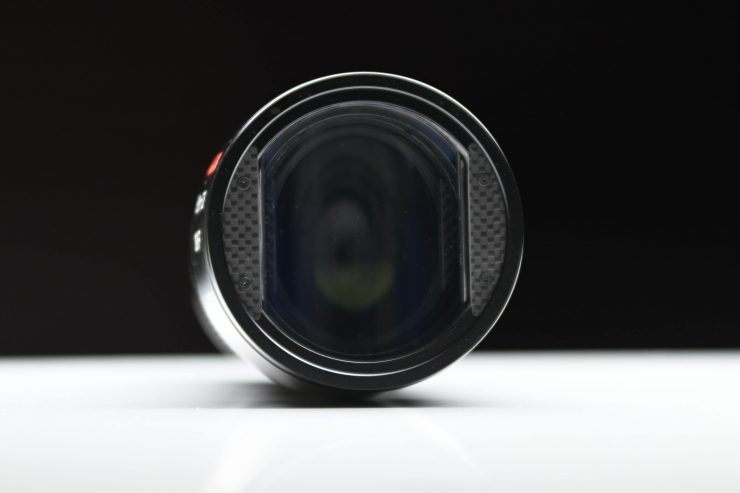
The lens is designed with an 86mm front filter thread for ND filters or diopters. The front diameter is a standard 95mm for matte box mounting.
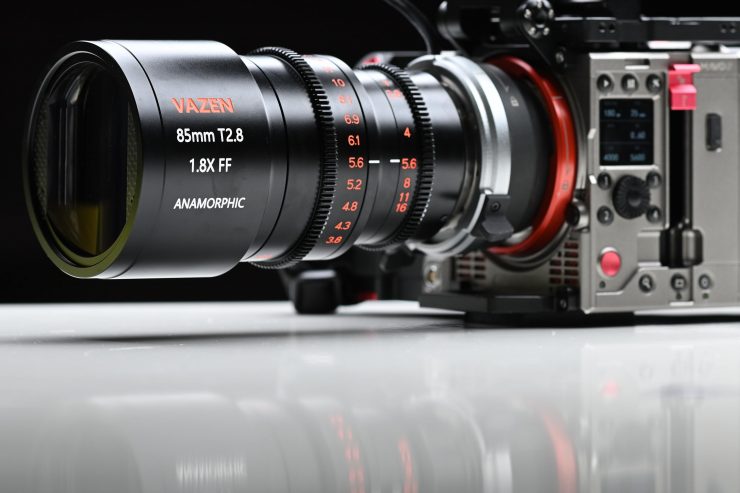
The aperture and focus rings feature industry-standard 0.8 mod cine gears. The location and position of the iris and focus gears are expected to be consistent with the rest of the focal lengths once they become available to make switching a lens over easier and fast when you are running a follow focus.
The lens also features an ultra-wide 50° horizontal field of view and the closest focusing distance is 3.8 Ft (1.15m).
The 85mm T2.8 is available with a user interchangeable PL and EF mount. Both mounts are included when you purchase the lens.
Why 1.8x?
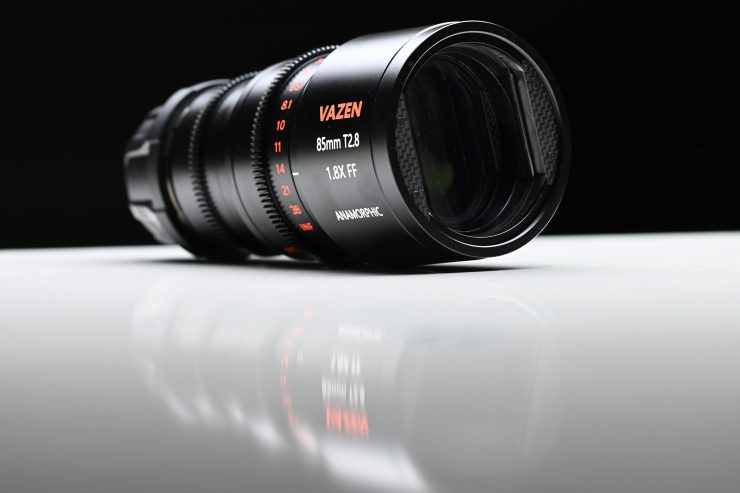
Vazen chose to adopt a 1.8x squeeze design to balance the anamorphic characters as well as the resolution of the image. The 1.8x squeeze can produce a cinematic widescreen 2.39:1 aspect when paired up with 4:3 sensors. When paired up with 16:9 sensors, much less data (than 2X anamorphic lens) is needed to be cropped away to create the desired 2.39:1 ratio.
In a lot of ways, particularly for a lens at this price, the decision to go with a 1.8x anamorphic makes a lot more sense than going with a 2x. 1.8x is more versatile and it allows the lens to be used on more cameras.
Optical Structure
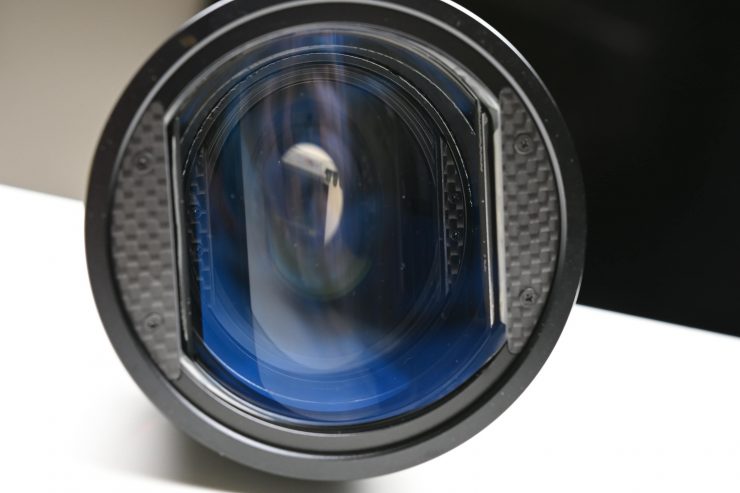
The 35mm T2.1 consists of 12 Elements in 10 Groups. The lens also has 11 aperture blades.
Breathing
Anamorphic breathing appears in a different way than when using a normal spherical lens. With a spherical lens, breathing gives the appearance that the focal length is changing. However, with anamorphic lenses, vertical stretching occurs with the background. So when you adjust focus from something close to something further away, the background takes on a squeezed appearance. Hence why you see oval instead of round bokeh.
With anamorphic lenses, the more you stop the lens down, the less the out of focus objects appearance will change. If you shoot wide open and pull focus the out of focus objects will change shape more dramatically.
Older anamorphic lenses such as Lomo’s and Kowa’s can breathe a lot. Newer anamorphic designs from companies such as Zeiss and Cooke have a lot less breathing. The popular Panavision E Series anamorphics retain true anamorphic artifacts such as disproportional vertical focus breathing.
So how does the Vazen fair?
You will notice that there is a lot of focus breathing from 3.8′ (the minimum focusing distance) to 4.8′ and then from there to infinity, it is reasonably well controlled. You can see my tests above. For these tests, I was pulling focus by hand.
Fall off and Vignetting
I didn’t notice any real noticeable fall of or vignetting when using this lens on a Kinefinity MAVO LF.
As the lens covers an image circle of 44mm I wouldn’t expect to see any vignetting or light fall-off when used on most full-frame sensors. I wasn’t able to test the lens out on an ALEXA Mini LF or a RED MONSTRO.
Sharpness
A lot of the more ‘affordable’ anamorphic options on the market tend to struggle when it comes to sharpness. In saying that, some anamorphic lenses have an inherent softness that is esthetically pleasing to a lot of DPs.
I shot some sharpness tests with the Vazen on a Kinefinity MAVO LF to see how sharp the lens was at various T stops. Above you can see that the lens is a little soft wide open at T2.8, however, it still has enough sharpness that you could certainly use it wide open. The lens does improve quite a lot once you start stopping it down, and by the time you hit T5.6 it is pretty sharp.
I also did some edge sharpness tests to see how the lens performed. Again it is a little soft at T2.8, but as far as edge sharpness is concerned, it cleans up very quickly once you hit T4.
For an anamorphic lens, the sharpness is good, especially considering the price.
Lens Flare
Along with nice oval-shaped bokeh, lens flair is one of the most sort after characteristics of shooting with an anamorphic lens. The Vazen will give you that typical blue streak that most people like. Wide-open at T2.8 the blue streaks are quite pronounced and whether or not you like that look is a purely personal decision. I personally liked the lens flare and streaks I was getting with this lens.
Once you close down to T5.6 the blue streaks are less pronounced, but they do take on more of a harsher appearance.
In general, the lens maintains a good amount of contrast even when bright light sources are coming directly down the lens barrel.
Chromatic Aberration
The lens doesn’t have any real-world visible chromatic aberration. Even if you zoom in 400% when used at T2.8 nothing is visible. The lack of chromatic aberration is nice to see.
Bokeh
Nice oval-shaped bokeh is something you want if you are purchasing an anamorphic lens. The bokeh produced is esthetically very pleasing and the lens has a reasonably nice fall off from in focus to out of focus areas, especially when used wide open. However, for my own personal tastes, I do prefer a softer fall off.
Color Tone & Personality
The lens is fairly neutral when it comes to color. In terms of its personality, it probably doesn’t have as much character as some other anamorphic lenses, but instead, it focuses more on optical performance.
I quite like the look of the lens, but again, this is just my personal opinion.
Real World Thoughts
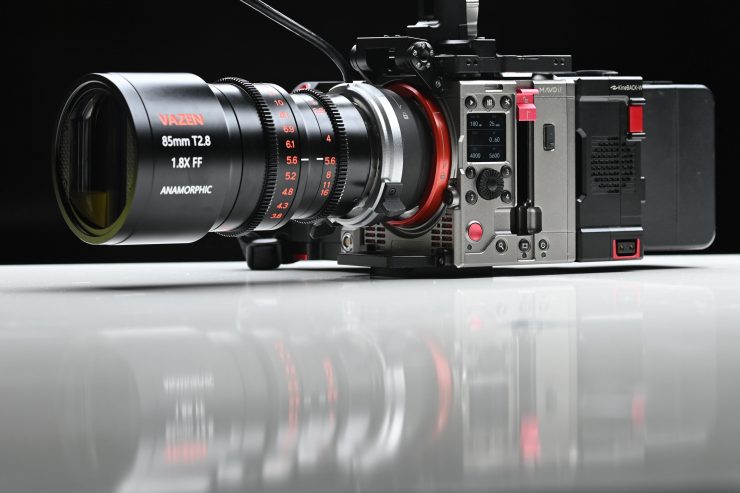
The lens is relatively easy to use and operate and I liked the images I was getting from it. It is sharp and optically very good. The lens is relatively compact given the image sensors it covers and it works well on mid-sized digital cinema cameras.
Above you can see some vision shot with the lens. These shots are primarily done so you can see the characteristics of the lens.
My only real complaint is that there is only one focal length available. You can’t realistically go and shoot a project with a single 85mm anamorphic lens. Vazen should have waited and released this lens with more focal lengths.
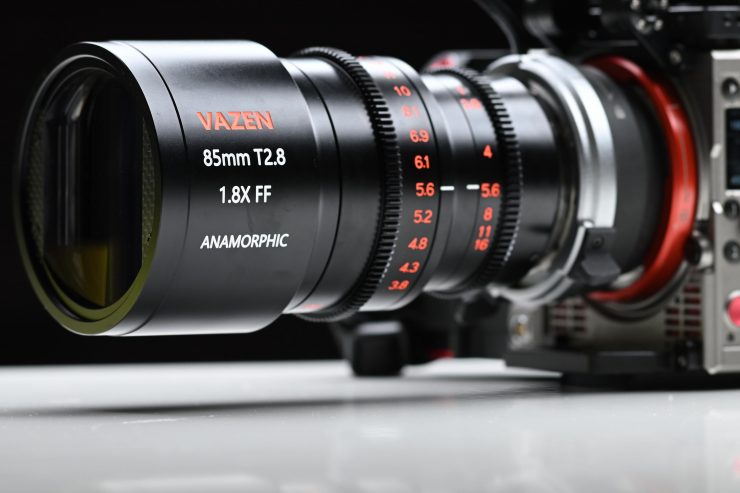
More Focal Lengths Coming
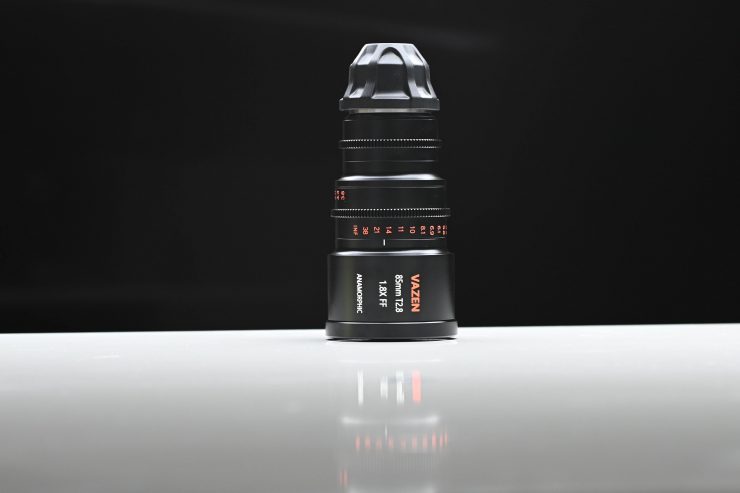
As I mentioned earlier there will be a 55mm and 105mm lens being added to the range. I’m going to play the devil’s advocate for a second here and state that I personally think it makes a lot more sense to launch lenses once you have a set available. Buying a single focal length (especially an anamorphic) is hardly ideal. There are not a lot of projects where you can shoot everything on an 85mm anamorphic.
I am not just having a go at Vazen here, because other lens companies have done the same thing.
Price & Availability
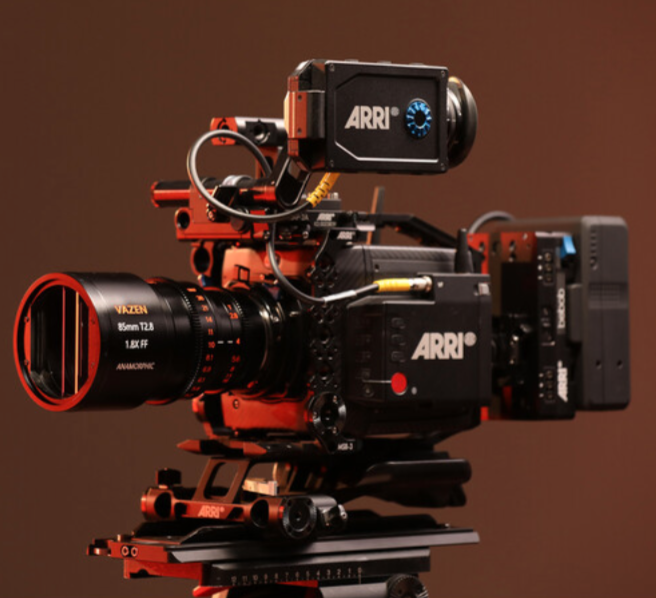
The Vazen 85mm T2.8 1.8X FF Anamorphic Lens is now available to pre-order for $8,000 USD.
Competition?
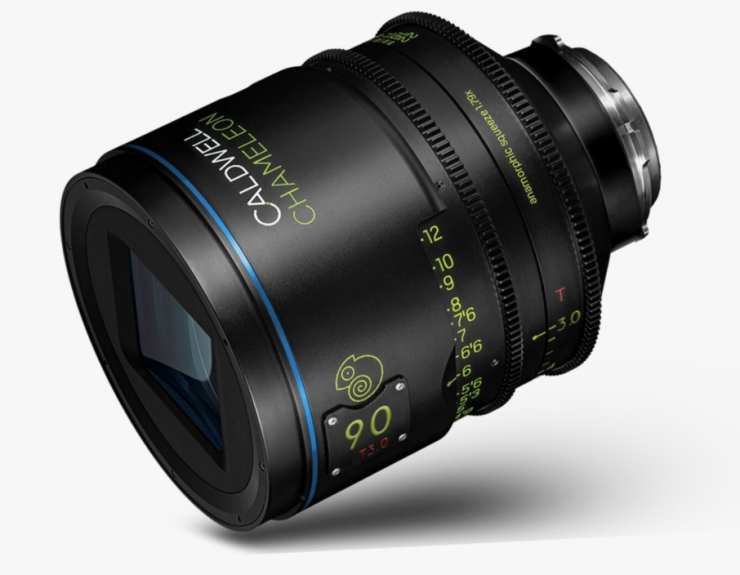
There is actually only a handful of 1.8x full-frame anamorphic prime lenses available, and the Vazen isn’t priced to compete with any of them.
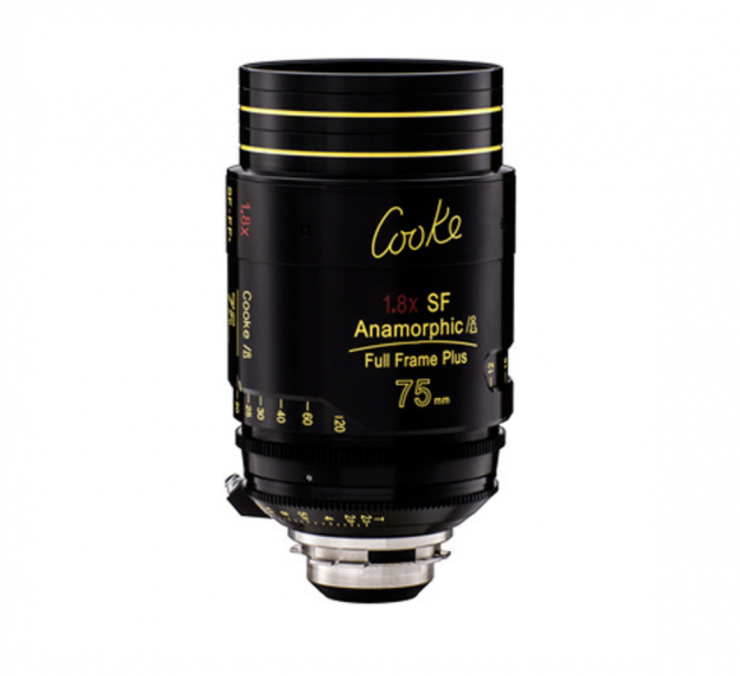
You have the Cooke 1.8x Anamorphic/i Full Frame Plus series, and the Caldwell Chameleon 1.79x XC Anamorphic Lenses (XC -EXTENDED COVERAGE). The Caldwell Chameleleon primes retail for €28,750 and the Cooke 1.8x Anamorphic/i Full Frame Plus series cost $32,000 USD each. The benefit of both of these series is that they are already available in multiple focal lengths. With the Vazen there is currently just one focal length.
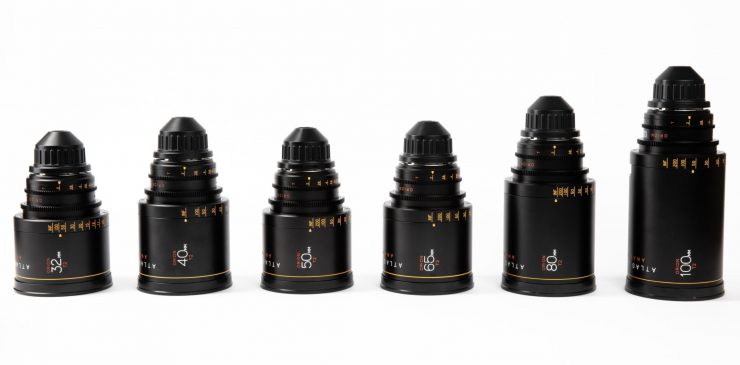
At $8,000 USD the Vazen sits in a category than probably puts them more in competition with the Atlas Orion Series, even though those lenses only cover a 31mm image circle and they are a 2x anamorphic, not 1.8x.
Do you really need an anamorphic lens?
I think in principle a lot of people like the idea of shooting with anamorphic lenses, but whether or not you actually need to maybe a completely different story. Depending on what you do there may well be little to no demand to shoot anamorphic.
While you may find the look of anamorphic esthetically pleasing, a lot of shows will not shoot anamorphic if they are going on broadcast television, simply because the broadcasters don’t want viewers complaining about black bars on top and below the image. With more and more online content being created by Netflix, Amazon, and Disney, etc. this isn’t really an issue. Online steaming entities are more than happy to have productions shoot with anamorphic lenses.
In my honest opinion, it is usually better to just rent anamorphic lenses for projects that require them. Even if you are looking at 3 Vazen lenses you have to factor in the entry cost is going to be around $24,000 USD. Buying a single anamorphic lens and not a set is not something most people are likely to do.
Conclusion
In the past, I have generally been pretty disappointed with most so-called ‘affordable’ anamorphic lenses, however, at $8000 USD I wouldn’t put this lens in that category. This is a mid-tier anamorphic lens that tries to balance price, build-quality, and performance.
In my personal opinion, the lens could have slightly better mechanics, better markings, and maybe a little more character. In saying that, it is pretty sharp for an anamorphic lens, it has nice bokeh and flare, and it can be used on a wide array of cameras.
Anamorphic lenses are hard to review. Sure, I can talk about the technical aspects of a lens, but technical perfection is not what most DPs look for when choosing anamorphics. The character and unique look of a lens are why certain anamorphic lenses are more popular than others.
Anamorphic lenses are still pretty niche for most shooters and unless you have projects that require anamorphic lenses or clients that don’t mind you using them, then I would think long and hard about purchasing one.
Given there is only one focal length currently available, I wouldn’t be rushing out and buying this lens until I got to test the other focal lengths that are coming. My advice would be to never buy an expensive lens (and expensive means different things to different people) without trying or testing that lens out first.
Lenses can have different characteristics when used on different cameras and it is important to try out both the lens you want on the camera or cameras you own or use.
The Vazen T2.8 1.8X FF Anamorphic is a nice lens and it certainly ticks a lot of boxes. It certainly won’t be for everyone, but it is a more budget-friendly option than other full-frame anamporphics that are on the market.
As I mentioned earlier it strikes a pretty good balance between affordability, image quality, and usability.
Like what we do and want to support Newsshooter? Consider becoming a Patreon supporter and help us to continue being the best source of news and reviews for professional tools for the independent filmmaker.

